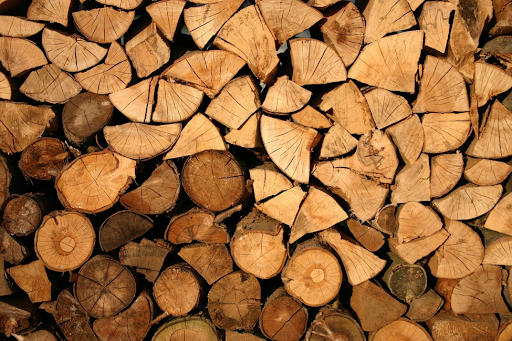Recycling Timber in Australia: Learn the Why & How of the Process

Recycled timber can be utilized in multiple ways. For instance, it can be recycled into furniture, pallets and flooring as well as used to produce biomass energy – an eco-friendly source of both heat and electricity production.
Wood recycling is an eco-friendly and cost-effective solution to reuse timber planks. Recycled lumber can be utilized for construction, remodeling and furniture projects alike – often coming from old barns, ships, crates or decommissioned buildings as well as pallets or waste material. Reclaimed lumber may even outscore its new counterpart in Janka hardness scale; making reclaimed wood an attractive option for sustainable designers who wish to avoid exotic hardwoods harvested from first generation forests.
Recycling timber does have some minor drawbacks that can be resolved easily; most are minor and easily resolved. Recycled lumber may contain nail holes and knots that may make some applications undesirable; however, such imperfections can add character and make your finished project appear more rustic or unique.
Recycled wood can also be more economical than its new lumber counterpart, making it the ideal solution for those on a limited budget. Not only is recycled timber via companies like ridlyrubbishremoval.com.au more cost-effective and more durable than other forms of building material, it is also easy to come by; many salvage companies and demolition services provide wood recycling as part of their service. Some may specialize in recovering industrial/commercial buildings while others focus on home renovation and landscaping projects.
Wood is an invaluable renewable natural resource that should not be wasted. Wood plays an essential role in our ecosystem and makes an ideal building material, yet many take its existence for granted. Recognizing that trees don’t last forever is key; while deforestation concerns arise frequently, recycling timber and other materials whenever possible remains crucial to sustainable living.

Environmentally Friendly
Recycled timber is an eco-friendly alternative to new lumber. Producing it requires less energy than plastic and metal production processes, making it an energy-saving and sustainable solution for companies aiming to decrease their carbon footprint. Plus, it’s cheaper cost can save both resources and money for companies striving to be environmentally responsible – not to mention improve consumer trust among eco-savvy customers.
Using it can also help conserve forests. By replacing fresh cut wood harvesting with recycled wood, which requires significantly less energy and water use for harvesting, recycling can reduce both building construction environmental impact as well as chemical preservative use such as creosote or chromatid copper arsenate preservatives that may need to be added during preservation processes.
Most wood that gets recycled comes from construction and demolition sites, where it may be mixed in with waste products like laminates, panel board and MDF – making separation difficult. To ensure a cleaner wood product for recycling purposes, it must be sent to a specialist facility where manual and automated sorting and scrubbing processes will remove paint stains and metal contaminants – this process may take months or even years depending on what waste type needs processing.
Wood waste that hasn’t been reused usually ends up in landfills where it decomposes and releases greenhouse gasses. But timber can be recycled in order to extend its useful lifespan while recovering carbon stored within it, potentially being reused to build homes, furniture or other products.
Recycled timber offers many advantages over new wood in terms of moisture content and processing requirements, including its lower moisture levels that don’t need chemical treatments to maintain strength. Recycled material can often be cut and shaped more easily than new timber for construction projects reducing processing requirements by half or more.
Many people want to recycle but lack the education or infrastructure to do so effectively. To address these problems, many communities are creating recycling programs where citizens can drop off yard waste for processing into new products – providing an excellent way for people to help support the environment as well as supporting local governments or businesses financially.
Affordability
Recycled wood can often be more cost-effective than purchasing new, especially when it comes to hardwoods. As lumber prices have steadily increased over time, recycled wood becomes the more cost-effective alternative. Using recycled lumber saves the environment from deforestation and climate change while making use of flooring or decks from recycled lumber an eco-friendly alternative to petroleum-based products that may have negative consequences on the planet.
Recycled woods come from existing buildings such as barns, houses, warehouses and factories which were dismantled. After being collected by recycling companies, these woods are then cleaned off of edges, nails removed and treated again to prevent mold growth – making the timber stronger than new.
Reclaimed timber offers many advantages, one being its zero moisture content compared to new lumber that must go through drying processes such as kilns or similar processes before being sold to customers. Not only is reclaimed timber cheaper, it’s also more environmentally-friendly by helping to decrease demand for freshly harvested and freshly sourced trees and thus help slow deforestation rates.
Reclaimed timber can serve a number of uses beyond building materials, including mulch or animal bedding. Recycled wood, which you can find here, may also be processed into particle board feedstock; however, this process requires more energy than creating new timber products, increasing costs accordingly. It can either remain rustic in appearance or can be cut to create modernized products with clean lines.
Wood recycling has quickly become a rising trend in the construction industry, as it reduces landfill waste while simultaneously cutting down new trees for milling – both major causes of deforestation. Recycling wood can often be done for free or near free – providing both financial and environmental savings benefits simultaneously.

Aesthetic Appeal
Timber is an eco-friendly material that adds luxury and timeless style to any home, building, or office. Recyclable from demolition sites or old pieces of furniture alike, recycling timber can save time and money while helping the environment.
Recycled wood has the advantage of being considerably stronger than its newer counterpart, thanks to years of exposure to weather elements that has left it contracting and expanding, which reduces warping and cracking. Reclaimed lumber has already dried out over time compared to new wood that needs to go through drying kilns, making it much harder and more stable. Reclaimed timber also benefits from having been exposed to such conditions that it has contracted and expanded numerous times, giving it greater resistance against warping or cracking.
Eco-friendly homeowners and offices often opt for recycled timber in their home or office projects, as it helps prevent deforestation and reduce landfill waste wood. Reusing timber also preserves precious forests and jungles which are constantly under pressure from humans – it adds charm and character with natural flaws such as splits, scars, dent marks or nail holes which give recycled pieces their distinctive charm that you simply won’t get with new pieces of wood.
When using recycled timber in your project, ensure it is clean and sanded before recycling it. Also remove any nails or screws before taking the wood back for reuse – doing this will ensure it can be safely reused while increasing its value as well.
Repurposed timber offers timeless style and can add a bit of history to any home or commercial building. Recycled wood has its own distinct look that captures sophistication while emphasizing organic elements in any space, while being both extremely durable and versatile, making it the ideal material choice for shop fitting or commercial fit out projects.





